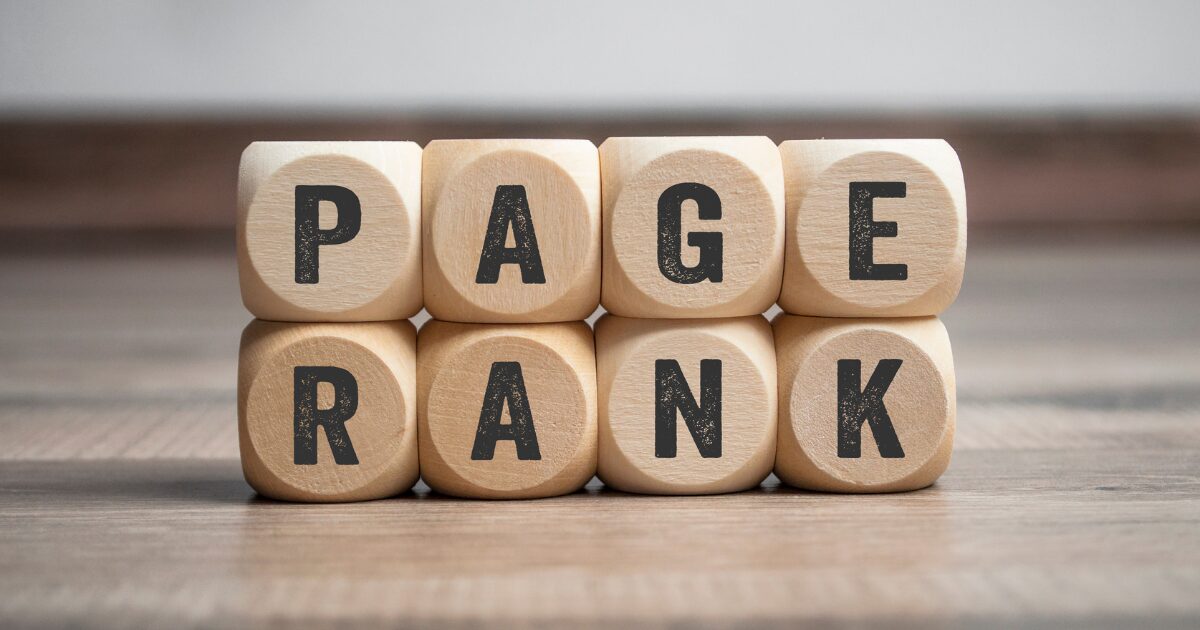We often hear that “low-quality content is bad for SEO.”
In fact, there are many examples of sites that have significantly improved performance by rewriting or removing low-quality content.
However, many people may have a vague understanding of what “low-quality content” refers to.
Additionally, there may be many web developers who are worried that they don’t know how to identify low-quality content.
When it comes to SEO, you need to judge low quality based on Google’s standards, not your personal standards.
Therefore, in this article, we will explain the following points about low-quality content.
If you are thinking of “reducing low-quality content and want to further grow your site,” please refer to it.
Table of contents
What is low quality content?
According to Google, low-quality content refers to “thin pages that add little or no value.”
reference: Low-quality content (& why high-quality content matters) – Google Search Central – YouTube
Another way to say this is “pages that are not unique and do not provide value to users.”
Low-quality content is described in English as “Thin Content” or “Low-Quality Content.”
Low-quality content according to Google
So, exactly what kind of content is considered low quality?
Here we will explain what Google considers low-quality content based on two sources provided by Google.
- Four types of “low quality content” defined by Search Central
- “Low quality content” in search quality evaluation
Four types of “low quality content” defined by Search Central
Google introduces the following four types of low-quality content in its Search Central guidelines and video.
The above four contents violate the guidelines and are subject to penalty measures by Google.
I will explain each content.
1. Automatically generated content
“Automatically Generated Content” means content that is mechanically generated by a program.
For example, the following content created using a program falls under automatically generated content.
Much of this auto-generated content is aimed at manipulating search rankings and gaining search traffic, rather than helping users.
Therefore, it is considered low quality.
reference: About automatically generated content | Google Search Central
2. Affiliate page with little content
“Affiliate pages (sites) with little content” are affiliate pages that provide no added value, or sites that are only for affiliates.
For example, in the following cases:
On the other hand, if a site contains a wealth of unique ratings, reviews, product comparisons, etc., and is differentiated from other sites, it can be said to be a high-quality content (site).
Ask yourself, “Why would a user go to my site instead of going directly to the vendor?”
If you can’t answer, it may be an affiliate page with little content.
reference: Affiliate Program and SEO Guidelines | Google Search Central
3. Unauthorized content
“Unauthorized content” simply means copied content.
For example, the following cases apply to content that has been copied without permission.
Unauthorized reproduction of content from other sites is prohibited from a copyright perspective.
Additionally, even if you post some changes to the wording rather than a complete copy, if the content you create does not add unique value, it will be considered low quality.
reference: Unauthorized content and scraping | Google Search Central
4. Guidance page
A “direction page” is a non-unique page created solely for the purpose of directing users to a specific site from search results.
Also called a doorway page.
For example, a case where you create a large number of pages with only the region name different and direct people to the same site would be considered a guide page.
reference: Doorway Page violates guidelines | Google Search Central Blog
The problem with navigation pages is not that they direct you to a specific site, but that they do not contain any useful page-specific information.
In the example above, the problem is that it does not include information specific to each region.
Each page focuses on a different search keyword, but in reality, many pages are exactly the same.
Content that is not unique or has low originality is considered low-quality content by Google because it reduces user convenience.
reference: About the doorway page | Google Search Central
“Low quality content” in search quality evaluation guidelines
The General Guidelines also mention low-quality content.
The Search Quality Evaluation Guidelines are a manual for Google to have external evaluators evaluate its own search results.
It is not used for actual evaluation, so please think of it as a reference material to understand “Google’s way of thinking”.
The following items are listed as characteristics of “Low Quality Pages” in the search quality evaluation guidelines.
A page receives a “low” rating if it has one or more of the following characteristics:
- The level of expertise, authority, and trustworthiness (E-A-T) is insufficient for the purpose of the page.
- The quality of the main content is low relative to the purpose of the page
- Not enough main content is useful for the purpose of the page
- The title of the main content is exaggerated or shocking
- Ads and supplementary content significantly interfere with the main content
- The website information and content creator information is insufficient for the purpose (there is no legitimate reason for anonymity)
- Extensive reputation research shows that websites and main content creators have a moderately negative reputation.
Quote source: Search quality evaluation guidelines (General Guidelines)
*Page purpose: The reason the page was created. For example, a “news page” could be “conveying news,” a “mail order page” could be “providing product information or sales,” and other purposes that are useful to users.
When evaluating search quality, we can see that “E-A-T” and “Is the user’s convenience hindered?” are also important.
The negative impact of low-quality content on SEO
So how does low-quality content negatively impact SEO?
Here we will explain two negative effects on SEO.
1. Overall site rating decline
Low-quality content can lower the reputation of not only that page, but the entire site.
This is because Google also evaluates the overall quality of your site.
If you have low-quality content on your site, it may hold back high-quality content and cause your rankings to drop.
In its Search Central blog, Google writes:
If parts of your website contain low-quality content, your overall rankings may be affected. Therefore, by deleting low-quality pages, consolidating or improving pages with weak content into useful pages, or moving low-quality pages to another domain, you can improve the quality of your content and increase your ranking. Another concrete guidance is that there is a possibility of an increase in the
Quote source: Guidance on how to build quality sites | Google Search Central Blog
Google implemented the “Helpful Content Update” in English-speaking countries in August 2022.
The Helpful Content Update documentation also suggests that sites with a lot of unhelpful content may lose rankings.
Not only the content itself that is not useful, but also content on sites that are determined to have a relatively large amount of such content, will rank lower in search because it is considered that there is more content to be displayed elsewhere on the web.
Quote source: What creators need to know about Google’s Helpful Content Update | Google Search Central Blog
In order to avoid major damage from updates like this in the future, it is important to improve the overall quality and reputation of the site.
2. Risk of penalty
Manual penalties will be implemented for content that violates Google’s guidelines.
Google takes action against domains that attempt to gain rankings by displaying pages that have been copied without permission, or pages that have little original content and are of no value to users.
Quote source: Low-quality content and SEO | Google Search Central
A manual penalty is a response when a Google representative visually checks your site and finds a violation.
The four types of low-quality content mentioned above are listed as violating guidelines and are therefore subject to penalties.
A manual penalty will result in your page or site being removed from Google’s search results.
How to identify low-quality content
There are two main ways to find “low-quality content” on your site.
I will explain each.
1. Google Search Console “Crawled – Not indexed pages”
The first way is to check with Google Search Console.
Click “Index” → “Pages” and check “Reason why the page was not indexed”.
Pages classified here as “crawled – not indexed” may be considered low quality by Google.
This is because “Crawled – Not Indexed” pages are pages that Google crawled but did not index.
Google may not consider your content to be of sufficient quality to be indexed.
Click “Crawled – Not indexed” to display a list of URLs, so check each one.
However, pages classified as “crawled – not indexed” cannot be uniformly determined to be low-quality content.
Ultimately, you will need to make your own judgment on whether something is considered “low quality” based on Google’s standards.
2. Judgment based on the items listed in the official document
One way is to compare it with the contents of Google’s official documentation.
Google’s recently released “Helpful Content Update” document includes a checklist for self-evaluating your content with a “yes” or “no.”
For example, if you answered yes to the following questions, you need to rethink how you create your content.
- Is the content primarily meant to attract users from search engines rather than being created for humans?
- Do you produce a lot of content on different topics in the hopes that some of it will show up in search results?
- Do you use automation to a large extent when creating content on many topics?
- Do you primarily summarize other people’s opinions without adding value?
- Are you writing articles just because they’re trending and not for your existing audience?
- Even after a user finishes reading your content, do you want them to feel like they need to search again for better information from other sources?
- Are you writing articles to have a certain number of characters because you heard or read somewhere that Google has a preferred number of characters? (No such setting exists).
- Have you decided to cover a niche topic, even though you have no real experience, thinking you can get search traffic?
- Does your content promise to answer questions that don’t really have an answer (for example, a product release date, a movie release date, or a TV show air date that is supposedly unspecified)?Quote source: What creators need to know about Google’s Helpful Content Update | Google Search Central Blog
Google also has a checklist regarding content quality in the following document, so please check it out as well.
The next chapter explains what to do if you discover low-quality content on your site.
3 ways to deal with low quality content
There are three main ways to deal with low-quality content on your site:
Google’s John Mueller also mentions three ways to deal with office hours.
I will explain each.
1. Rewrite
The most recommended solution to low-quality content is to rewrite and improve the content.
If your content is lacking in content, make it more valuable to your users.
Consider adding your own insights, adding highly specialized information, or presenting information differently than other sites.
If you can provide “value that can only be obtained here” on the page, the quality will increase.
The content was published for a reason, so it’s best to improve it to make it higher quality instead of deleting it.
2. Delete
If it is difficult to improve the content to higher quality, deleting it is an option.
If you have created too much low-quality content in the past or there is no room for improvement, it is not realistic to improve it one by one.
If the content is no longer needed for the site, it is a good idea to delete it.
3. Noindex
Use the noindex tag for pages that you would like to keep on the site but may be judged as low quality.
By using the noindex tag, Google will remove the content from search results and no longer rate it at all, thus avoiding any negative impact on your site’s overall reputation.
Also, if there is a lot of low-quality content and you cannot take appropriate action immediately, it is effective to temporarily set it to noindex.
Please check the following article for information on when to use the noindex tag and specific installation methods.
What is noindex? Explaining SEO effects and 3 major usage patterns [Google’s opinion also] -webma-
We have introduced the three methods above, but it is important to use them depending on the purpose and site situation.
[Be careful] Content that is not necessarily low quality
One of the most common mistakes in SEO is to automatically judge valuable content as “low quality” and delete it.
If you delete content that is necessary for your site, it will actually have a negative impact.
The following four types are often mistaken as “low-quality content,” but they are not necessarily of low quality, so be sure to check.
1. Content with low search traffic
It is easy to think that content with low search traffic is considered low quality by Google, but it is dangerous to judge it as low quality based on that alone.
This is because the number of search inflows varies depending on search demand (size of need).
Even if the search traffic is low, the content may be useful to site visitors simply because it is searched less often.
In other words, demand and content quality must be considered separately.
In fact, Google’s John Mueller said the following during office hours:
What you want to avoid is thinking, “I don’t get much traffic from Google, so it must be bad content” and deleting it. It doesn’t matter if you don’t have a lot of traffic. It may just not be searched much. What you want to watch out for is when most of your website has really thin, low-quality content.
Quote source: English Google Webmaster Central office-hours hangout – YouTube (Contents translated by our company are posted. Including free translations)
2. Content with a small number of characters
Just because the number of characters is small does not necessarily mean that it is of low quality.
There are some searches that can satisfy a user’s needs with just one or two sentences.
In fact, there are sites that have suffered significant damage as a result of deleting content that has been deemed “low-quality content” due to a small number of characters.
I just had a call with another SEO whose client removed 50% of their pages regarded as low quality.
Their thinking was that any page with less than 1000 words gets removed.
The result was a 60% organic traffic loss landing on a 404 page with a 98% bounce.Please don't do this.
— William Harvey (@WilliamHarvey) September 15, 2022
The above tweet is an example shared by Google Search Central Gold Product Expert William Harvey.
One SEO client lost more than 60% of his traffic after deleting about half of the pages with less than 1,000 words as being of low quality.
Don’t judge it as “low quality” just because it has a small number of characters.
3. Content with short dwell time
Even if the dwell time is short, it does not necessarily mean that the content is of low quality.
If the number of characters is small, the user’s dwell time will be short even if the user’s goal is achieved.
For example, a user who searches for the weather forecast is likely to leave your site within seconds after seeing what tomorrow’s weather will be like.
If you want to judge the quality of content based on the length of stay, check whether the length of stay is longer or shorter relative to the number of characters.
4. Category page
Category pages and tag pages are pages with only simple links, so some people think that they are of low quality because they are not unique or are duplicates.
However, category pages are highly convenient pages that present a variety of content all at once, so this does not necessarily mean that they are of low quality.
In some cases, category pages such as “List of Materials” and “List of Case Studies” are displayed at the top and attract a lot of access.
Please be aware that easily deleting category pages or setting them to noindex can actually have a negative impact on SEO.
What to do if you are penalized for low quality content
If you receive a manual penalty from Google, you can check it by going to “Manual countermeasures” in Google Search Console.
Identify pages and parts that violate guidelines and improve them.
Once you have taken action, you will need to submit a “reconsideration request” to Google.
You can also submit a reconsideration request using “Manual Actions”.
Google’s official page also describes what to do if you receive a “manual countermeasure”, so please refer to that as well.
Manual action report – Search Console Help
If you want to know more about Google penalties, please check the article below.
What are the penalties you should know before taking SEO measures? Know the causes and countermeasures and take correct SEO measures -webma-
[Summary] Improving and deleting low-quality content will improve the quality of your site.
When it comes to SEO, it’s important to understand what content Google considers to be of low quality.
If an individual decides that the content is “low quality” and deletes necessary content, the negative impact may be greater.
Google considers “thin pages with little or no added value” to be low-quality content.
Web developers should keep this in mind.
By reducing low-quality content, you can expect to improve the overall quality and reputation of your site.




